Lervig
A Life In Brewing
Escrito por Jesús Olano—Fotos por Guillermo Robles, Jesús Olano; Stavanger (Norway), 28/03/2018 beerbayOU
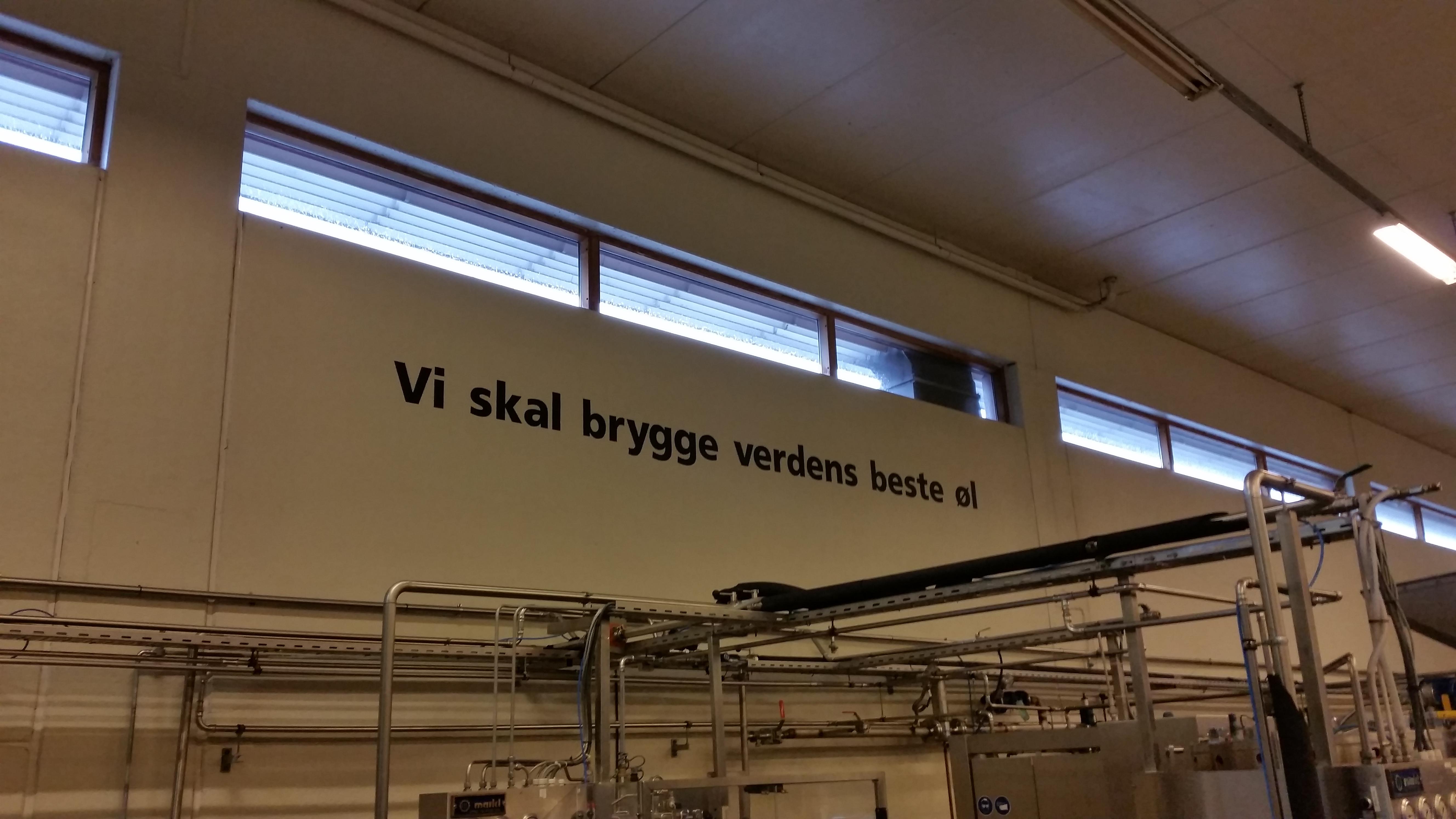
If you want to talk about beer you won't probably find somebody better than Mike Murphy. After having a career in brewing in USA, in Italy and then in Denmark, Mike is trying to take his own brewery—Lervig—to the next level. It has been a long way from the American West Coast to the windy Norwegian shores of Stavanger, and the road was never easy.
Mike Murphy is really sociable and talkative, and soon makes you feel at home even if you're in the middle of the Norwegian winter. After showing us the brewery, he takes us to his craft beer bar in Stavanger, ØST, next to the old city's brewery.

You moved to Stavanger in 2010. The local brewery—Tou—closed in early 2000’s, despite being opened since 1855. Did you find any local influences when you arrived?
“When I got here in 2010 [...] I saw the capacity, the potential of this brewery, so I thought, ‘If I can get this, I can make some stuff happen’.”
Mike: Yes, it closed in 2003. It was sold to Carslberg in 1989 and then they stopped the production in the old plant and moved 20 km away. It was the city’s beer. And back in 2003, I guess than Carlsberg was just outsorcing to other brewers. So they found out that it made more sense to produce it in Oslo and send them back here as the local beer.
And when that happened, the main chief honours in this town, became quite patriotic. You know what Frank Zappa says, “every real city needs an airport, a stadium and a brewery”. So, they put this plan together to build this brewery up. And they had a big following at the time. They had a big revolution here in town, where people were smashing Tou bottles in the street.
When I got here in 2010, it was clear to me that this brewery was not going to survive unless we did something. I saw the capacity, the potential of this brewery, so I thought, “If I can get this, I can make some stuff happen”.
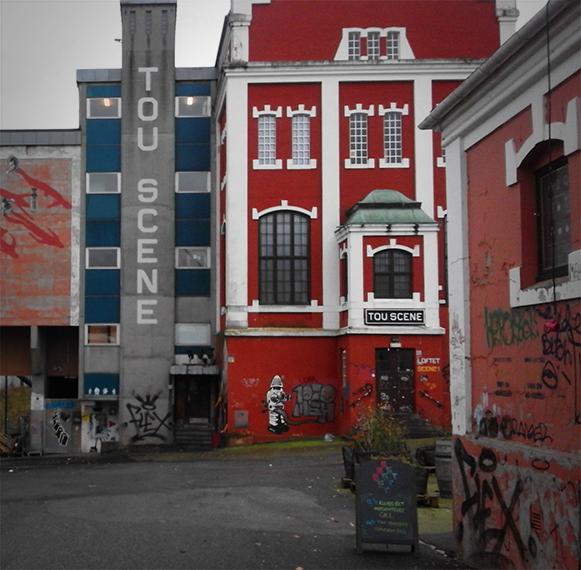
You grew up in the USA, then you moved to Italy in 1999, then to Denmark and then you established in Norway. How has this journey influenced your style of brewing?
Mike: I started homebrewing in early 90’s, didn’t know much about craft beer at the time. I was just curious. I wanted to handcraft something and get drunk out of it, that was my goal. But I quickly learned about pale ale. My first batch didn’t went well, but for my second, I was at a store, and then some guy let me try his pale ale he’d brought to taste… and I hadn’t tasted a pale ale before, so I was like “what the hell, that’s really good!”. And he showed me step by step, and that’s how I got started in the pale ale thing. Then I learnt about Sierra Nevada, and also about another small brewpubs opening on. After that, in late 90’s, craft beer was everywhere in America. Actually, craft beer in late 90’s was different from what it is now in America.

What has changed since then?
“Craft beer has become this large force you can reckon.”
Mike: Back then, everything was still new. We were making amber ales, pale ales, IPA’s... It was the first wave. And then it came the second wave. Brewers all around America were trying to replicate styles from Belgium, Germany, UK that they were not popular anymore—because the industrial revolution had killed them off. So a lot of times, you had American brewers in a bar brewing a saison, even thought they had never been in Belgium or tasted it before. But they were making it actually better that they were making it in Belgium.
And then you get to stage three, I would say in early 2000’s, where brewers started to try to outdo each other and stand out. I guess it was a form of marketing. Like West Coast brewers brewing a certain amount of hops into beer. Just allowing creativity to run crazy.
And then you have the growth. Craft beer has become this large force you can reckon. There are excellent beers, you see new styles even today. Emerging for the last 2 years, you see the New England IPA—the juicy. They’re really incredible, I remember I was talking with some brewers from Brooklyn, and I saw the picture of the beer, and it looked like orange juice, and I told them “this looks like a mess!”. And he was like “oh, no, you can't brew this beer fast enough”. And I was there in New England a few months ago, and I got a chance to taste them. And I see why people is so crazy about them.
People always ask me why I want to brew. Well, when you get to brew, and you get to drink the beer right out the fermentor. It is just special compared to what you get in the bottles. Well, this [New England IPA] is a good idea of how beer should taste when coming from fermentor. They’re working on developing this explosive hop flavour. It’s really a special beer, and I think it opened a whole new world for all breweries. Trillium, Tree House, Other Half... all those breweries are making New England IPA’s. They can sell it fast enough in its own area. And they don’t want to export it, because it has a 1 month shelf life. There is no way you can get them here at a commercial scale. So why don’t they produce it here for the people here? It is like opening up a whole new world.
It’s all coming back to local...
“I grew up I the 90’s, so I still have this aim of having ‘the rainbow of craft beer’—the brown ale, the stout, the IPA, the red ale…”
Mike: Yes, you start to see it now in America. People want their local beers now more than ever. It is not about local pride anymore. It is about hop freshness, and getting the higher quality. If the breweries nearby are making a really good quality, why would you need to go and buy the beer somewhere else?
Breweries have always relied on brand loyalty. Always reaching for the same beer. But the new consumers they want to try something new, they want to try something different. And if you got it right, and you start doing new products that are consistently good for them, they will always want to try your beers. That’s what still influences me.
I grew up I the 90’s, so I still have this aim of having “the rainbow of craft beer”—the brown ale, the stout, the IPA, the red ale… It’s kind of hard for me to walk away from that. But I am doing that now. But if it’s not selling, what can I do with that. If you don’t want me to kill the brand, buy it more. But there are certain beers I certainly still like to make. Like triple IPA’s, barley wine...
It definitely influences me, because I am more an old school kind of craft beer guy. I dreamed about being a brewer in the 90’s, I made that a reality in the later 90’s. And that influences me still today.
Then you moved to Italy, which influences did you took away from there?
“If you’ve heard the expression ‘pioneers get slaughtered, settlers get rich’. So I was the pioneer, and the guy behind me got rich. But life is all about making decisions.”
Mike: I learned a lot on my own. But there was nothing to influence me there. I influenced myself. When I moved there, I met a girlfriend who worked in bar there. And I thought “I love pale ales, and I can see that in America everybody loves pale ales”.
If you are in the craft beer business, you either have to brew pilsners or pale ales. If you want to get volume, don’t make a pilsner, because everybody else is doing that. Make a pale ale. I figured that out and it catched on faster. I joined them for four years. Then I ended up leaving, and after that my friend Leonardo started with Birra del Borgo.
It is kind of ironic that I made a pale ale that was called Pioneer Pale Ale. And if you’ve heard the expression “pioneers get slaughtered, settlers get rich”. So I was the pioneer, and the guy behind me got rich. But life is all about making decisions. I made some few mistakes and bad judgements, and missed opportunities all along the way a few times over.
I’ve been in the business since the early days, since before it was cool. And now I see a lot of people coming in, marketing guys, with big ideas. They might be smarter, and have better connections than I did. I’m just this guy that loved craft beer and wanted to make it happen. I’m starting to keep up with them. I want the young guys around me to try to step in my back. I’ve given all the brewers that worked with me—and they were quite new to the business—some kind of push. So they are really happy, and they’re really further ahead in this game that they would be. I tell them “hey, I spent last twenty years learning how to do this, I will teach you in one year”. Maybe some of them will respect me when I’m eighty years old and dead. “That guy was good to the industry”.
And then finally you ended up here in Stavanger.
“I was tired to be ‘the guy behind the scenes’. I was a front guy before, and then when I moved to Denmark, other brewers took all the credit. I didn’t want it to happen again, so I moved here.”
Mike: I was working in Denmark, and the brewery got bought. I didn’t want to leave Denmark, I really liked it. It’s a nice place. But the brewery scene was kind of saturated, the brewers there were thinking kind of small. Even today, most of the craft breweries they’re kind of small. They’re not really that ambitious. I was tired to be “the guy behind the scenes”. I was a front guy before, and then when I moved to Denmark, other brewers took all the credit. I didn’t want it to happen again, so I moved here.
I saw an opportunity here. This place was something I have never heard of. But I heard they were looking for a brewer. And they had a very serious brewhouse. Something I could grow with. I came here and met them. I don’t think that they believed in it or that they saw the same things that I saw. I kind of turned down for a while, and then I said “let’s do it”. So it took me a year until I came here.
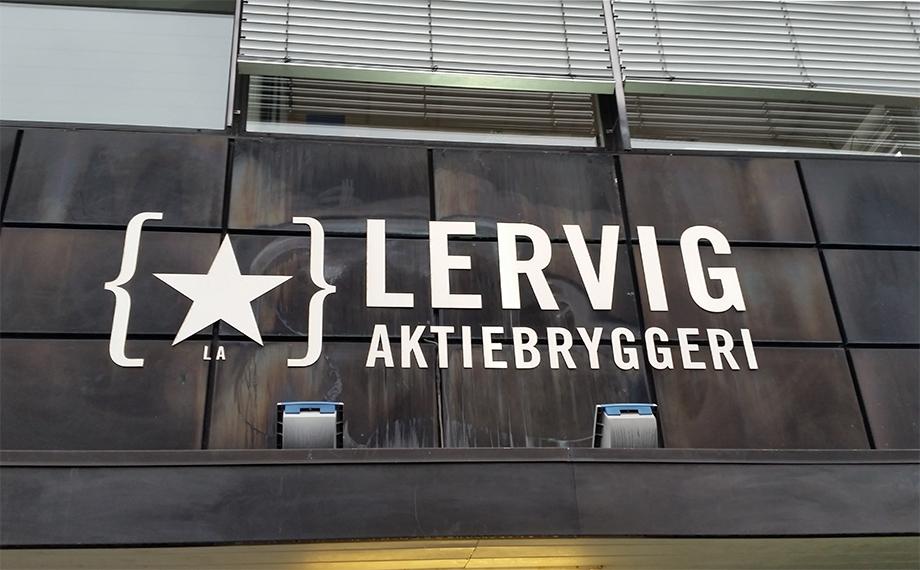
So I left my brewery in Roskilde and came up here in Easter 2010. First time here I was like “I got to take this place over”. I could tell it right way. It was completely different. I was so used to this Danish guys, that they were like American. Running around in circles and working hard. When I arrived here there was a worker in a table reading the newspaper. Another guy was running around in the brewery and trying to fix stuff. He didn’t even know what he was doing either, because he had never brewed in a brewery before. There was just one guy left in production. And the beers… they needed help.
My plan was to make some pale ales, things like that. So I started working on it. Then the board was scared when I made Lucky Jack. They thought it was too extreme. They thought we couldn’t sell it. But it was a little success here, so I started changing things up. And right now, nobody tells me what to do here. Of course, it is not like I am going to go like a loose cannon all around the place. I have always had good self-control, and I always try to produce something that I think the people will like. A few times I’ve made some mistakes and I’ve let the sales guys tell me what they want me to make.
Actually Lucky Jack is one of your most successful beers. Why do you think people like it so much?
Mike: With Lucky Jack we had a good combination of good branding. On one side, the name is good—they were going to call it Lucky Boy—, and then I told them “I don’t want to have a beer named Lucky Boy”. I guess that for a Norwegian person, Lucky Boy doesn’t sound that bad. But for me it was like “I don’t want to make a beer for pedophiles!”. So we changed it, and that’s what we got.
Then I wanted to make a quick sour American pale ale, fresh and filtered. Sales continue going up right now. Even thought some of the bigger breweries here—like Hansa—, kind of ripped it off as they made and APA, and stole part of the market. I was the first one in the supermarket with these beers. We don’t have national distribution and all that. But that’s how the market works, you’re just as good as your distribution is.
I keep trying to be there. One day I will be there, without having to make deals with the devil. But if the deal with the devil comes, and if that’s something that could work for us, then I would probably make it too.

You mentioned in another interview that “cans are the future”. Why do you think so?
Mike: I’ve always liked cans because… they’re cooler. They look better, they feel better. They are more compact, they have that 360 branding. You can chop a few of them in your backpack. For the beer? They are much better. With the bottle, there will always be some oxygen that gets through. They will always have some light, even if the bottle is brown. So, when you start drinking pale ales from a bottle, it hurts the quality pretty quickly...
Nowadays people is getting more picky! Ten years ago, bottles were fine. But nowadays people is expecting more and more. They expect freshness. So just for these two factors alone, cans is much better in terms of quality. I also think that for stouts and beers like that, is not so detrimental.
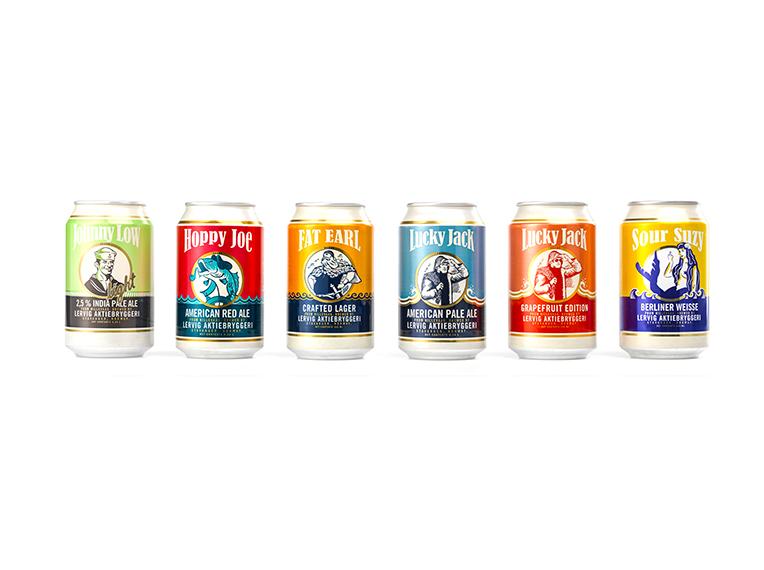
How do you see the alcohol culture here in Norway?
“Alcohol culture here is like… They’re creating a monster, like the preacher’s daughter”
Mike: Alcohol culture here is like… They’ve been kind of told that alcohol is bad all the time... The way they sell it, the way they treat it, the way they demonize it. Liquor stores are all owned by the state because they don’t want anybody to profit off from alcohol. They’re creating a monster, like the preacher’s daughter.
All the norwegians youngsters are completely drunk in the weekend. They don’t have a limit. And if you give them free booze that they can drink… They will kill themselves. I’m just generalizing here. They really overdrink, and that is not healthy. I have always believed in “drinking less, drinking better”. You’re supposed to enjoy the journey. I have friends of mine, that you see them, and they’re still drinking, and still asking you where the next party is.
You brewed a beer with pizza and money—the Big Ass Money Stout. Any other crazy projects for the future?
Mike: I don’t have any “crazy projects” on the horizon at the moment. I do have some on my mind. I like to do these crazy things every now and then. I don’t take myself too serious all the time.
But the reason it was crazy was Jeppe—the guy from Evil Twin—, he’s crazy. We kind of get along, we make each other’s laugh. And I think that was the idea that day. It wasn’t a serious idea until he said “I love it”.
He said, what’s the speciality food in Norway? So I told him: “they eat a lot of frozen pizza”. And Jeppe said “no, no, what do they have a lot of?”. And I told him: “they have a lot of money!”. Then I was thinking “how can I reach people that eat so much frozen pizza?”. I mean, frozen pizza is not that bad, but… there are better ways how to use money.

How much money did you use in the brewing process?
Mike: I put one Krona per liter. In total it was 6.000 Kroner—almost 1.000 bucks. Then I put a few frozen pizzas. It was not about tasting the pizza, but about making a little bit fun of the culture. Sometimes I think that’s the best kind of art—making fun of a culture. Even thought I pissed some people off, I think I exposed the “pizza problem”.
Crazy ideas… I had one the other day, I tried a beer from Oxbow, in Maine. They made a saison with lobster—and it was really good. And I actually tasted the lobster right in the middle. And it is still a very drinkable beer, you get the taste of the sea. And.. I want to do it with Kingcrab. It would be fun, because crabs are very popular here. I’ve always wanted to label the crab on it.
Maybe another collaboration...
“I see something another brewery is doing. Sometimes, I like what they’re doing, but they’re getting a lot of hype, so if I can get some of that hype, that would be great for us!”
Mike: Of course, and that’s how I do get stuck in collabs! I see something another brewery is doing. Sometimes, I like what they’re doing, but they’re getting a lot of hype, so if I can get some of that hype, that would be great for us!
There’s a lot of different motivations to do it. Sometimes is just about hanging out with that guy. Just put some heads together, and make the beer taste right. We had one collab that didn’t go out well, with Wild Beer and Co, that everybody was excited about, but I had to take it away. We tried to remake it, but that things, they take time. I like going to make collabs. It’s fun, it’s like being brand partners for a day.
It’s like Kilkenny and Guinness, everywhere you see a Kilkenny, you see a Guiness next to it. The average consumer who doesn’t know much about may think that they are different breweries. But they are not. That’s a brand partner. Brooklyn Brewery and Carslberg, brand partners. That’s a long term relationship that’s working out for Brooklyn. And it’s partly working out for Carslberg, because they don’t have a strong role in the craft beer scene. I got a beer tasting for this big company. They wanted me to come and spend time there for two hours, floating around the room, and talking about my beers. And they wanted to have all my beers there in the fridge, so everybody could drink them. And they still put Brooklyn beer in a bucket of ice. 2 out of 3 people were drinking a Brooklyn lager when I was there… and I just left. It’s like “you guys, don’t get it, why should I waste my time!”.
In 2011 you gave new look to brewery by famous street artist Dotmaster. Are you thinking to use it with your brand image?
Mike: It is not anything I’ve used in the branding yet. I made a glass with it, as you can see. Other than that, I haven’t really used it that much. I am getting away from our look, as I’m tired of it. I just don’t think it pops. I want to get a new artist to help us with that. And I would like to renovate our brand image. If you look to our cans right now, they’re based in sardine labels that were made in this town years ago. Those work well, and they have a retroish look. I don’t want to change those, but the stars, and the collabs… They’re starting to get boring. Goddam graphic designers, only using Pantone colors. They call them pastels. The worst colours in the world.

Your brewery is privately owned—what does it mean when planning your business what do you think about the trend of crowdfunding?
“I’ve never saw myself as a corporate type of person. But the better we get, the more corporate like we have to become.”
Mike: Being privately owned allow us to have more freedom—I guess. And I’ve never saw myself as a corporate type of person. But I think the better we get, the more corporate like we have to become. We’re producing goods for the consumer. So it still have to inspire confidence in the consumer. The better you get, the more things you can screw up, and the more it’s going to cost. So, you need to have a little bit more awareness. So that’s one thing. So I don’t still see any problem on being privately owned. We’re still planning our business, planning to expand. Because of the way that business works. If you want to run with the big boys, you always have to run with them. You cannot get up there quickly if you are not in the right place, at the right time and with the right name. Some people can be taking seriously very quickly—like Beavertown. They’re in London though, and I’m in Stavanger. Maybe if I would be sitting outside of London, I might been up there too. My goal isn’t to grow this brand and sell it out. But if it’s going to stay as hard as it is—and the growth is going to be as slow as it is—I will probably consider it, because things have to be good for everyone.
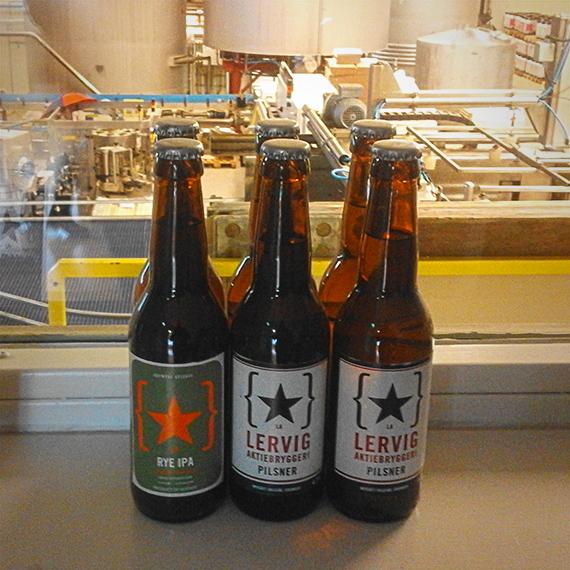
As far as crowdfunding, for raising funds, we’d love to do it. We’re thinking on doing a new emission, so we can expand the brewery and move to a new location. But we are not allowed in Norway to do crowdfunding about alcohol. But I would love to do it. But in Norway we cannot give beer in exchange. There is some thing we just cannot do. Laws here are so limiting. Until last year, you couldn’t even have a website to show your products. So we couldn’t even tell people what we were doing. And legally, we cannot have a Facebook, a Twitter, any social media. That’s a pretty big disadvantage, because Heineken sells here, and they can have a website. But I can’t. I don’t know what’s wrong with the people in charge, but for some reason the Norwegians aren’t changing. Even though they drink like fish. Last summer, they were discussing some law changes that would allow people to drink in the parks. And 9 out of 10 people are saying “this is a really bad idea, we will have drunk people all over the streets”. Why don’t they move the line a little bit, make things better? Am I worried about that. Because there is already drunk people anywhere.
What are your upcoming plans?
Mike: Working on improving the quality. Tweaking the brewery. Trying just to get the products ready for the big leagues. I’m really focused in getting those sort of things right. Until now, I’ve been good, but I want to make sure that things don’t really go back. Protecting what I already have done. Then I have a lot of ideas. Sometimes I want to make a new stout. Sometimes I want to make a new quad. I don’t really have a strong plan, but I thing getting organized is the main thing. Getting more organized in how we’re brewing, what we’re brewing. And increasing our sales. What I’ve realized now is that I might make the best beer in the world, but if I cannot tell to anyone, then it doesn’t matter. We’ve got a lot of potential that is getting wasted away because we’re not getting to the right sales channel. I want to learn how to push this brand to the next level, that’s what the most successful craft brewers have been to do. I have been always the guy who brewed, so now I have to start thinking on a new level.